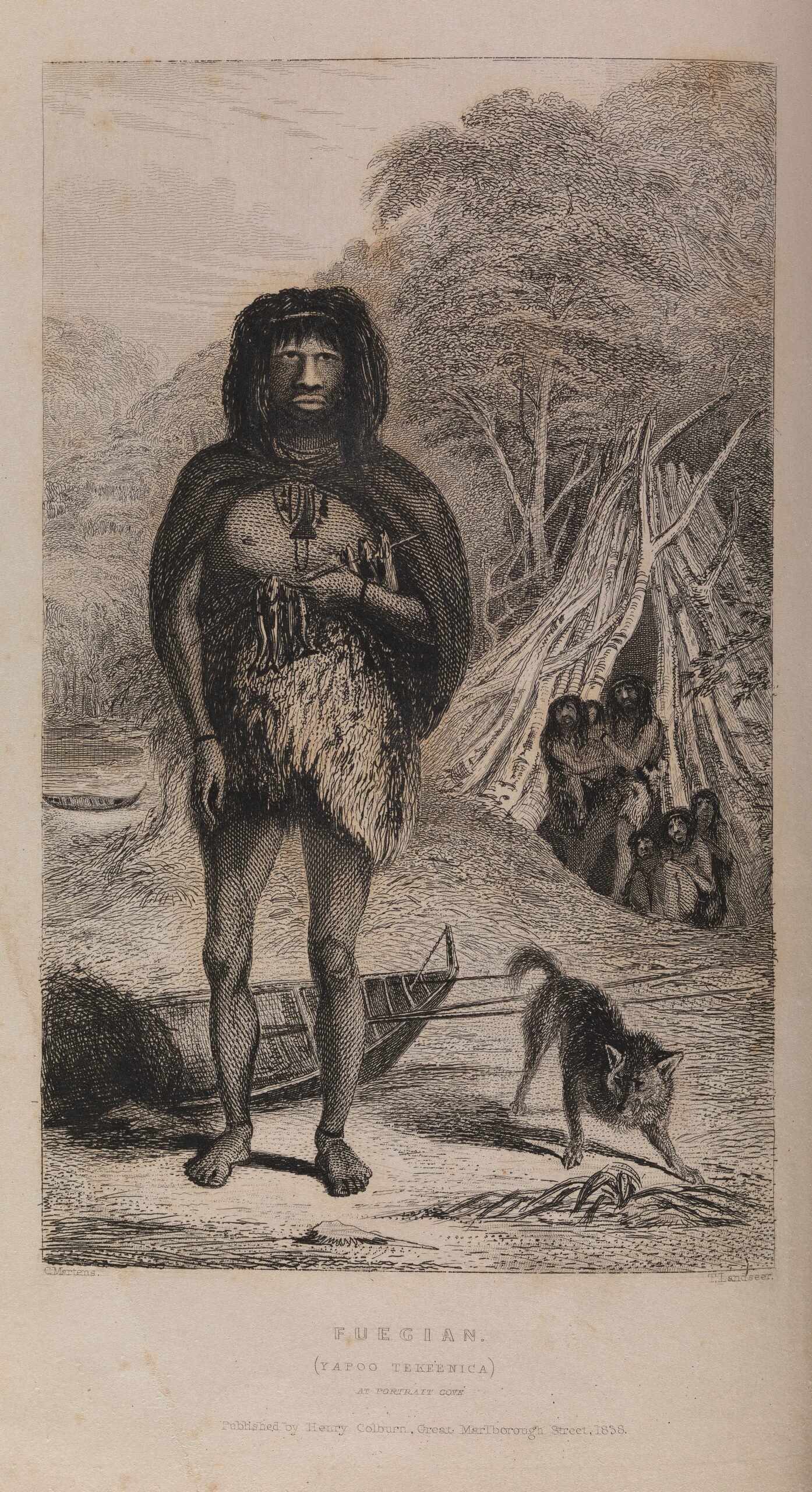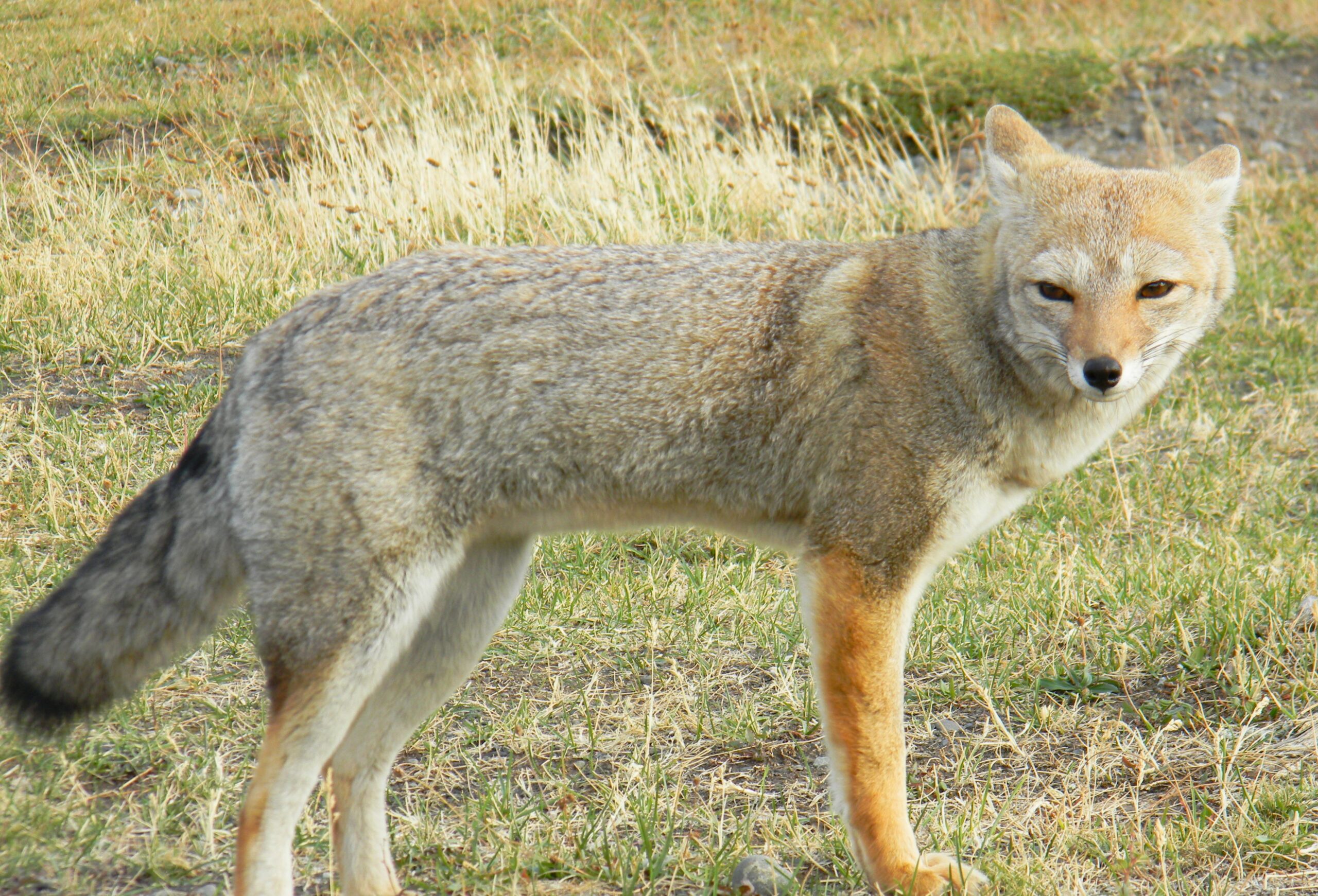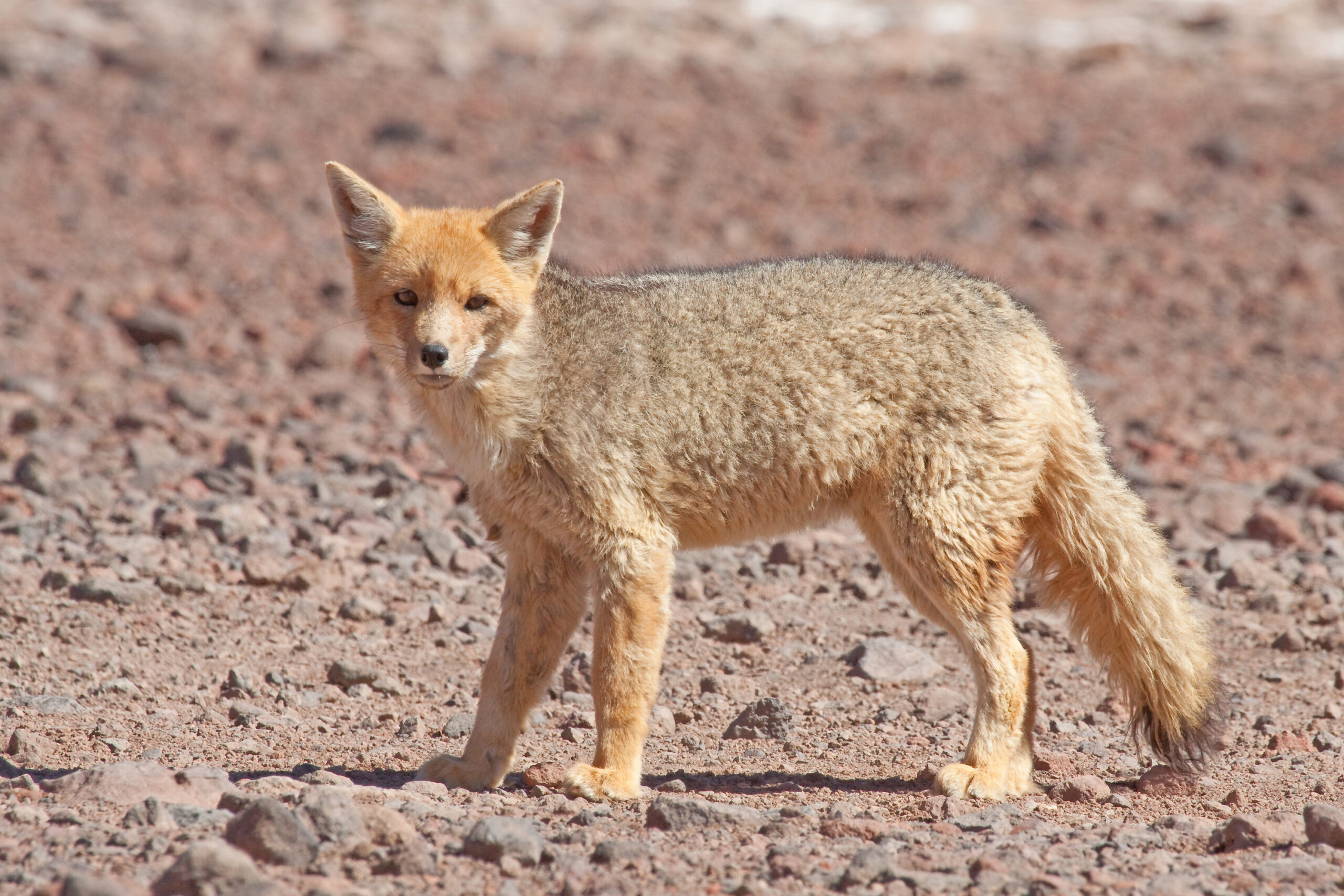
Fuegian dog (lower right). Photo courtesy the Wellcome Collection
You might see one scampering through the woods near the Hotel Las Torres or while you’re hiking the “W” Circuit with Fantástico Sur. For many years, an especially friendly one used to hang around Lago Sarmiento Gate, fraternizing with the rangers and newly arrived visitors to the park.
The creature we’re talking about is the fox, Patagonia’s other native predator besides the puma. Torres del Paine National Park is actually home to two different fox species. To the casual observer, they look nearly identical in terms of size and coat. But there are distinct differences.
The cute little gray fox — also called the Patagonian fox or chilla — survives mostly on rodents, but will also eat birds, reptiles and fruit. Even the largest males are no more than 12 pounds, which is around the size of your average housecat.

Gray fox hanging out at Lago at Sarmiento Gate. Photo by Joe Yogerst
Lycalopex griseus ranges across almost all of Patagonia except the high Andes, and can be found as far north as the Atacama Desert and the arid regions of northern Argentina. They breed in the fall, which means the youngsters (called kits) are born during the Patagonian winter and don’t see the light of day outside their den until the arrival of spring.
As recent as the 1990s, gray foxes were considered “vulnerable” on the IUCN Red List of threatened species. But a decline in hunting in both Chile and Argentina has created a more stable population and a downgrade to “least concern” on the IUCN list.
Their larger cousin is the Andean fox or culpeo, which can grow to more than twice their size (30 lbs). As a larger predator, their diet often consists of animals bigger than rodents — rabbits, hares, young guanacos and even the occasional lamb.

Andean Fox or Culpeo. Photo by Christian Mehlführer, Creative Commons
Adapted to a greater range of climates and ecosystems than the gray fox, Lycalopex culpaeus can survive in the altiplano as well as the tropical lowlands of Ecuador and southern Colombia.
Long ago, they were domesticated by some of the Amerindians of Patagonia and used for hunting. Called “Fuegian dogs” by European visitors to the region, the domestic version eventually became extinct along with so many of the native tribes.




